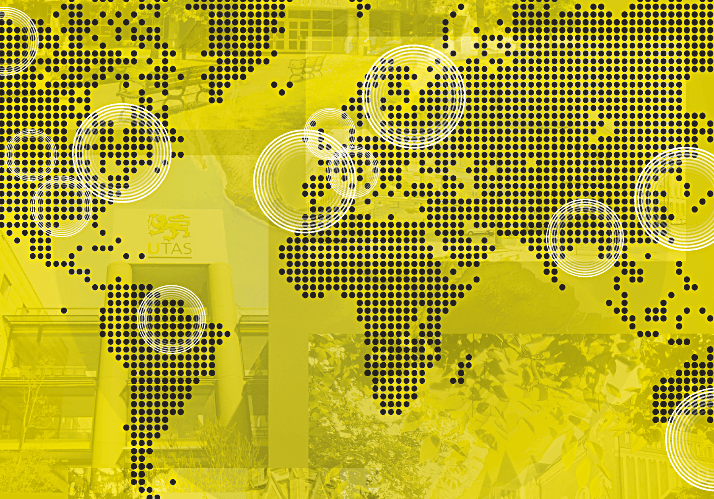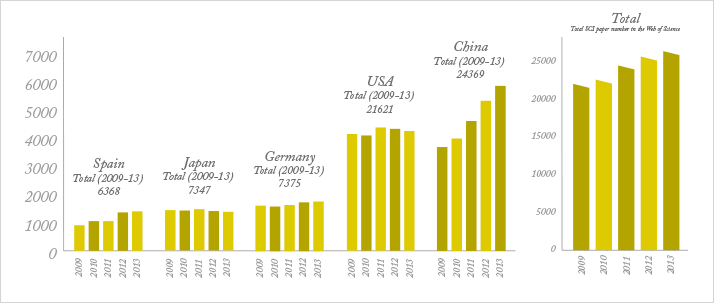
Chromatography is a powerful tool that plays a very important role in both research and economic development. But – as with other sciences – comparing and ranking institutions and their academic achievements can be tricky. In 2013, The Analytical Scientist compiled The Power List, which featured “the top 100 most influential analytical scientists” (1), including 37 chromatographers from 31 institutions. Statistical analysis of chromatography-related literature in the Web of Science allowed us to compare the number of SCI papers, the number of citations, and the number of highly cited papers of those 31 institutions.
Investment in science research and development has greatly increased as the Chinese economy has developed. Unsurprisingly, the government is very anxious to assess the impact of such support – and academic societies are also becoming increasingly interested in how they match up to international academic standards. For us at the Dalian Institute of Chemical Physics, chromatography is a major research field and we have a large team focused on chromatography-centered analytical chemistry. We too became interested in learning how our institute was performing in the world of chromatography. Clearly, there is no standard for making such assessments – opinions can differ and any number of indices can be used, such as paper number, citation number, patents, awards, foundations, achievement revenue, and so on. In the beginning, we tried to use a method based on total publication numbers from the Web of Science. Unfortunately, certain well-respected and famous US universities were excluded based on metrics alone.
How else could we judge impact? Well, the Analytical Scientist’s Power List offered a new angle of approach. There were 37 chromatographers on the list, representing 31 institutions and 15 countries (among them, 15 from the US, five from China, three from Germany, two from Australia, two from Belgium, and one each from Canada, Finland, Hungary, Britain, Italy, Singapore, Japan and the Netherlands). Generally speaking, the institutions represented on the Power List are at the top of their game, so we reasoned that if we wanted to learn more about our own institute’s standing, a comparison should be made with “Power” institutions. Fortunately, three scientists from our own institute were included on the list, so that made any comparisons even more compelling. Using the 31 Power List institutions as a starting point, we conducted a statistical analysis of chromatography-related papers in the Web of Science up until September 2014. Next, we compared the quantity and quality of papers published by these institutions to evaluate their development and international academic status in view of paper output.
Research by country We used Topic=*chromatogr* to search for chromatography-related papers from “Science Citation Index Expanded.” If “chromatogr” was included in the title, key words or abstract then the paper was included. As shown in Figure 1, from 2009 to 2013 the number of chromatography-related SCI papers from China has been significantly increasing year on year. Indeed, since 2011, the number of papers from Chinese scientists has been greater than any other country; the US, Germany, Japan and Spain ranked from second to fifth respectively over the last five years. The data show that China has been focusing significantly on chromatography research and applications in recent years.

In particular, the main fields of interest are in new separation/analytical methods and techniques, new columns and enrichment materials, new equipment and applications of chromatography in environmental analysis and life science. China’s rise to the number one producer of chromatographic research could be attributed to the technique’s relative immaturity in the country compared with more developed nations whose research outputs are being maintained at a more steady state. Similar conclusions were previously reported in another literature analysis (2). Research from “Power” Institutions The 37 scientists in The Power List 2013 come from 31 institutions. However, the number of SCI papers published by AMT corp. were few, so we based our analysis on the remaining 30 institutions. Table 1 shows that Ghent University, the University of Helsinki, the University of Washington, the University of Tennessee and the University of Michigan are the top five in terms of total papers produced. When looking at the last five years, our Dalian Institute of Chemical Physics moves up to second place (from sixth), pushing the University of Michigan out of the top five. We attribute this increase to proper research policies and growing financial support from both the institute and the Chinese government.
The number of SCI papers is an important parameter to evaluate the academic level of the Power Institutions, but we feel that much more attention should be paid to “quality”. In literature metrology, citations are a very important indicator of the quality of a given paper and it can be argued that the higher the citation number, the stronger the academic influence of that paper. For example, the average citation number per paper of all chromatography-related SCI papers is 6.5. If the average citation number of an institution is higher than 6.5, we speculate that the institution lies somewhere between average and advanced in chromatography research. We performed a comparative analysis of paper quality in two ways: (i) the citation time per paper and (ii) the number of highly cited papers.
As shown in Figure 2, several institutions have a citation number per paper (total years) over 30, including the University of Washington, the University of Waterloo, the University of North Carolina at Chapel Hill, Indiana University Bloomington, the Lawrence Berkeley National Laboratory, the Kyoto Institute of Technology, the University of Michigan, and the University of the West of England. We suggest that these institutions are traditionally powerful in chromatography. In the last five years, the Lawrence Berkeley National Laboratory’s citation number per paper has enabled it to climb up to first place, followed by the University of Michigan. The citation numbers per paper (total) of the three Chinese institutions are not very high; however, in 2009–2013, citations for the Dalian Institute of Chemical Physics’ papers increased rapidly, raising the ranking from 27th to 9th.

Figure 2. Comparison of citations per paper published in all years, and in the last five years; and highly cited papers (Top 5 percent papers) published in the last five years (2009-2013).
Highly cited papers are determined as those ranked in the top 5 percent by citations in the chromatography-related field and year of publication. First, the minimum citation number of the top 5 percent of papers is acquired (42 for 2009; 34 for 2010; 24 for 2011; 15 for 2012; 6 for 2013). If the citation number of the paper is higher than the minimum number of the top 5 percent of papers in the published year, the paper is considered a highly cited paper. From 2009 to 2013, the absolute number of highly cited papers published by the Dalian Institute of Chemical Physics is 60 overall, placing it first (see Figure 2). The University of Tennessee and University of Michigan come second and third, respectively. Representing highly cited papers as a percentage of all papers published by each institution offers another snapshot of quality. The University of the West of England, the Lawrence Berkeley National Laboratory, and the University of Michigan take the top three spots in this analysis.
Many metrics can help characterize the international influence of an institution – publications, patent licensing, funding support, famous scientists, scientific achievement transformations are all credible approaches. But we feel that the analysis of academic papers is a concise and robust indicator of scientific research capacity – especially in terms of basic scientific research. In recent years, the number of papers published by Chinese scientists in chromatography-related fields has been increasing, putting China in the top spot in terms of quantity. Indeed, many leading Chinese scientists and institutions have been working hard on chromatographic research in the last five years – and some remarkable progress has been made, especially when it comes to new chromatographic material, sample preparation technology, metabolomics and proteomics research. However, our analysis also shows that there is plenty of room for improvement in the quality – or influence – of Chinese papers. We believe that Chinese chromatographers should pay attention not only to the broader chromatography research frontier, but also to producing original and creative work. Overall, chromatography research will continue to see increasingly complex systems, demanding higher resolution, higher precision, higher selectivity, higher sensitivity and higher throughput. And it is in those challenges that we are all united!
Xiaoying Geng, Fuling Li, and Qi Wang work at the Dalian Institute of Chemical Physics, Chinese Academy of Sciences, Dalian, China.
References
- The Power List 2013, The Analytical Scientist, 9, 23-37 (2013).(https://theanalyticalscientist.com/the-power-list-2013/ ) X. Zhang et al., “Recent Advances of Chromatographic Research in China”, Chinese J. Chromatogr., 30 (3), 222-231 (2012).




